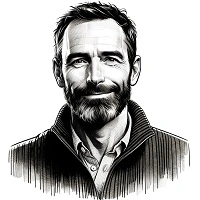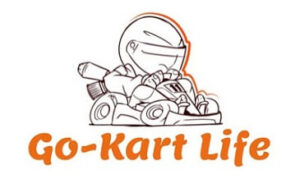The different classes of kart racing might be a little confusing due to the nuances of each division. Go-karting is one of the most exhilarating sports that has been around for some decades,
However, to participate in the fun that karting offers, you have to know the class that fits your age and skill. This article will give you a breakdown of the different go-kart racing classes available. So, let’s get right to discussing the go-kart classes.
- Kid kart or Baby kart racing class
- Cadet racing class
- Junior kart racing class
- 125cc TaG karting class
- Shifter 125cc karting class
- Lo206 (a fast-rising class in the U.S)
- Master karting class
- 250cc Superkart racing class
- Direct-Drive Karts
- Gearbox Karts
- Superkarts
Related Article: Drive With Confidence: The Top 8 Best Go-Kart Engines You Can Depend On!
Different Classes of Go-Karts
The first thing you should know about go-kart racing classes is that they are split by age and engine brand—the reason is to level the playing field and create a fair chance for all drivers.
Also, note that each class is split into divisions depending on the driver’s level of experience. Some local karting clubs may do this to further even the playing field.
Kid Kart or Baby Kart Racing Class
This class is where the youngest drivers (usually between ages 5 and 7) kick off their karting journey. A place where they start to learn about the rudiments of go-karting. A restricted 50cc 2-stroke engine powers the kid racing kart.
The engine’s restriction limits the top speed to about 30 mph since safety is of great priority. Some of the engines found in this class include:
- Comer C51 series
- Honda GX35 or GXH50 series
- Rotax
The class’s main aim is not to win championships or points but for kids to have fun. To further ensure safety in this racing class, the throttle stop on the kids’ karts are adjustable. Most classes also specify the engine weight to be used in each category.
Cadet Racing Class
This TaG (Touch and Go) category runs a 60cc 2-stroke engine for kids between ages 7 and 12. It is considered the next appropriate class for kid drivers who may have improved a little at karting. This class is similar to the kids racing class but is further subdivided into two groups.
- Micro (ages 7 to 9)
- Mini (ages 9 – 12)
The cadet racing class allows all drivers to run the cadet sized chassis explicitly made for it. In this class, the most common engine brands you will find are the IAME and RoK engines. The cadet class’s most incredible feature is that the engine manufacturers have also gone a step further with naming their engines.
The manufacturers have named the engines for this class to correspond with each subclass (the Micro and Mini). And they are:
- IAME Micro and Mini Swift
- RoK Micro and Mini Vortex
These engines can run up to 50 mph and 60 mph, respectively. To further level the playing field, drivers are divided into “beginner, intermediate and advanced “categories based on their experience.
Junior Kart Racing Class
The junior class offers so much fun and adventure for drivers between the ages of 12 and 15. This serves as the gap class between classes with lower and higher displacement engines. It is also referred to as the 100cc TaG (Touch and Go) kart racing class.
This is due to the characteristic 100cc 2-stroke engine used in this class. The junior category can also serve as the entry-level for adult drivers who are just getting into karting. In terms of expense, this class will keep you on a low budget and high on fun. The engines that split this class are:
- IAME KA100
- Yamaha KT100
- Master X100AC
Lo206 Karting Class
This is a fast-rising class in the U.S because it is very competitive. It uses a 4-stroke Briggs and Stratton engine for both the junior and the cadet age group alike. The Lo206 engine can run up 60 to 70 mph. This has different categories, as well:
- LO206 Junior
- LO206 Senior
- LO206 Masters
125cc Tag Karting Class
This class also covers drivers between ages 12 and 15 and allows for adults above 15 years. It is the most competitive of all the classes, and it offers so much fun to drivers with varying experience levels. This class runs the 125cc 2-stroke engine, and speeds can hit up to70 and 80 mph.
The 125cc engine is one of the most popular engines you will find in major karting classes. This class is also divided into
- Junior class
- Senior class
The junior category uses a restricted exhaust to differentiate the two classes, while the senior category does not. The engine types found in this class are
- IAME X30
- Rotax Max
- RoK
Some local karting clubs can go further to split each of these subclasses into the “Beginners, Intermediate, and advanced categories,” based on the driver’s experience level.
This is done to create a fair environment for drivers, even with the same engine brand. They can run up to speeds as high as 70 and 80 mph.
Shifter 125cc Karting Class
Speed is considered a unique attribute for this class. The 125cc shifter class is open to drivers above 15 years of age but not for beginners. The drivers in this class are usually in the intermediate or advanced level. This is because they can hit maximum speeds of 80 mph and go as high as 115 mph on sprint tracks.
The engines that are common in this class are:
- Honda CR125
- IAME shifter
- Rok Vortex Shifter
- Rotax Max DD2 EVO
The relatively extreme speed this class offers is what provides the ultimate challenge that most drivers seek to experience while karting.
Masters Racing Class
The Masters class features drivers that are 32 years and above. The races are always very hilarious and fun to watch. The Masters’ class uses a rare 150cc engine. The class is split by minimum weight variation into the:
- Heavy divisions
- Light divisions
Kids that do not fit into the weight categories in their class are allowed to race in the Master class.
250cc Superkart Racing Class
This class runs at much higher speeds than the other regular classes and requires experienced drivers. The Superkart is not as common as the other classes, but you are likely to find it at the championship level.
Unlike the more common karts, Superkarts can reach up to 140mph. They are usually not divided by engine brand due to the very few available manufacturers in this class. However, the common engines found in this class are
- BRC250
- Honda RS250
- TZ250
The racing classes listed above are used in the United States. They are also similar to those used in other countries except for minor variations. They are very competitive and can be a stepping-stone into the professional racing world.
At the international level, kart racing is administered by CIK-FIA (Commission Internationale de Karting) and is divided into three broad classes.
- Direct-drive karts (OK and OKJ)
- Gearbox karts (KZ and KZ2)
- Superkarts
These classes bear some similarities to those at the national or regional levels.
Related Article: How Fast Can A Go-Kart Go? Top Speeds Of Different Go-Kart Types
Direct-Drive Karts
This class broadly consists of the OK (Original Kart) and OKJ (Original Kart Junior) categories. The OK is the top-level class and is open to drivers at age 14. Likewise, the OKJ category captures younger drivers between ages 12 and 14.
Both categories use the no-gearbox 125 cc water-cooled two-stroke engines and are direct-drive (driven by motors). Each category has its technical specifications (such as rev limit, air boxes, carburetor, etc.)
Gearbox Karts
This racing class captures both the KZ1 and KZ2 categories. Unlike the direct-drive class, both categories use 125cc engines and are equipped with a 6-speed gearbox. The KZ1 and KZ2 are similar except for the differences in their chassis and breaks. The KZ2 class captures drivers at age 15 and older but must have a minimum weight of 175 kg (driver plus kart), while that of KZ1 is 170 kg.
Superkarts
Superkarts are quite different from regular karts in that they have full aerodynamic body kits. The chassis are usually longer than those of the sprint karts. The Superkart class exclusively uses a 2-stroke 250cc five or six-speed gearbox engine producing up to 100hp. This class is the fastest of all the categories. Drivers in this category can also implement sequential shifters to improve the kart’s speed.
The few Superkart manufacturers in the United States are Top kart, CRG, and Margay. You will rarely find clubs that race the super karts in the United States.

Goran, an experienced go-kart racer, fuels GoKartLife.com with his passion and expertise. He offers valuable insights and tips for fellow enthusiasts, fostering the growth of the go-kart community. Join Goran at GoKartLife.com and immerse yourself in this exhilarating sport.

